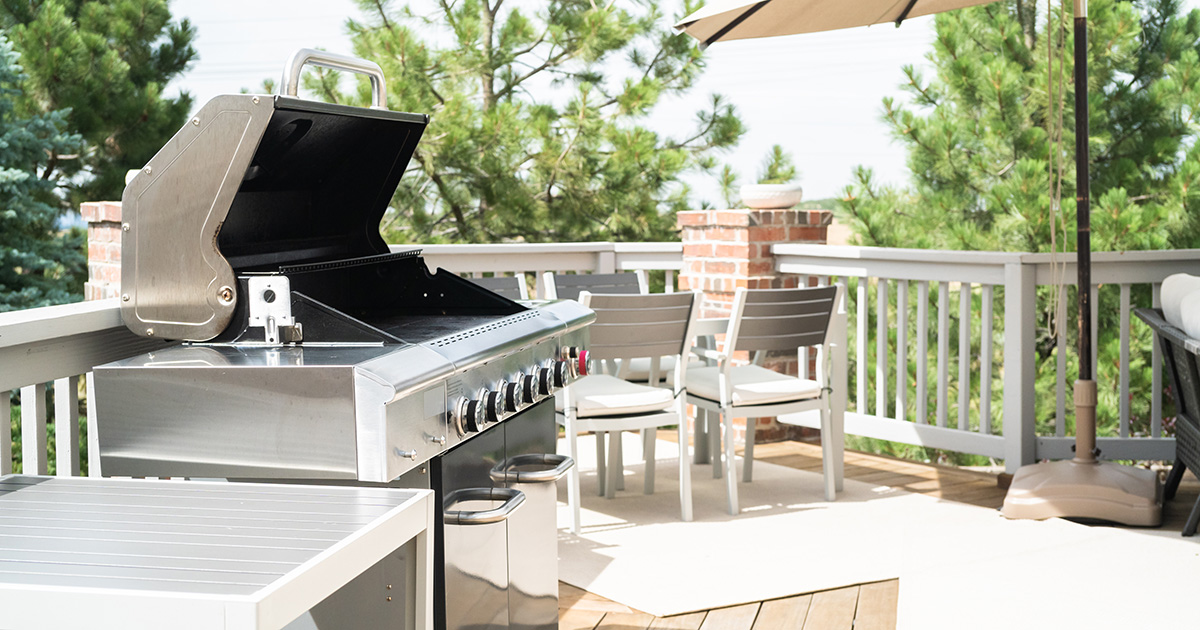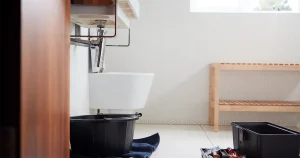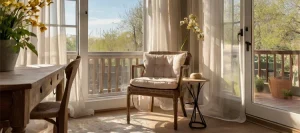In this article:
Building an outdoor kitchen is a satisfying project, not only because it keeps you out of the house but also because it transforms part of your backyard into a delightful and useful place to entertain and to enjoy with family and friends. This guide will take you through the major considerations: cost, site, safety, and materials, to make your dream backyard kitchen a reality.
What are the essential outdoor kitchen features?
A good outdoor kitchen needs sufficient counter space for preparation and serving, proper lighting fixtures for evening use, and a comfortable seating area. A water supply and a place for trash container are needed. It is helpful to have designated storage space for cookware, dishes, spices, and other thigs frequently used in the outdoor kitchen. Considering protection from direct sun and rain may also be important. And of course do not forget the grill!
How much does and outdoor kitchen cost?
As with most projects, the cost to build an outdoor kitchen is highly variable and depends on the size of the space, the complexity of the design, and the materials used. Smaller, more basic outdoor kitchens typically cost between $2,000 to $10,000 and include essential appliances as well as some perfunctory layout. Do-it-yourself projects can save money, but they’re most successful if you have good construction skills. Larger luxury outdoor kitchens can reach more than $50,000 and feature appliances of the highest caliber, significant amounts of counter space, and premium materials for a custom, top-of-the-line experience.
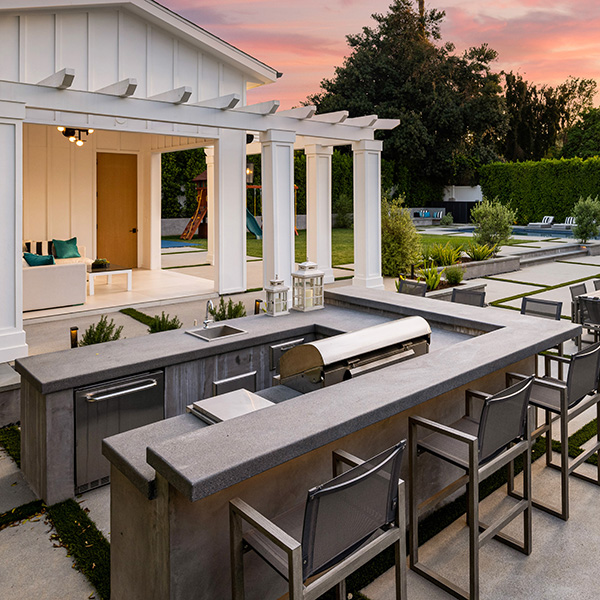
Where to place an outdoor kitchen?
Location is everything, so, when choosing your spot, think about convenience, aesthetics and functionality. It should have easy access to indoor kitchen facilities and utilities, and benefit from sunlight and breezes. You also might want to think about shadow, wind and the proximity to dining or lounging areas. Siting the kitchen against your house can make utilities more accessible, but requires careful consideration of breezes, spacing and ventilation.
Can an outdoor kitchen be against the house?
Yes, an outdoor kitchen can be installed against a house. Although you would need to pay extra attention to following safety guidelines and local fire codes. Installing an outdoor kitchen area will have a number of benefits, in particular easier access to electrical, gas and water supplies. Be sure to provide proper ventilation and protection of the house exterior from the heat and cooking grime.
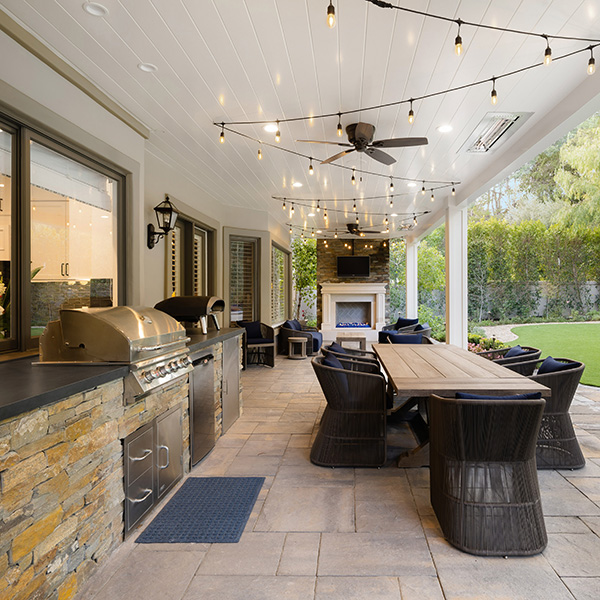
Can an outdoor kitchen be eclosed?
Definitely. An enclosed outdoor kitchen can be a year-round feature, especially if you’re prepared to cook and eat outside more in the spring, summer and fall than some homeowners – with metal roofs, HVAC (heating, ventilation and air-conditioning), glass walls, retractable screens, pergolas with built-in shades, fireplaces, even infrared heaters. Enclosing your kitchen costs more and is more complicated to build, and the added protection given to appliances can significantly increase the comfort of your outdoor space.
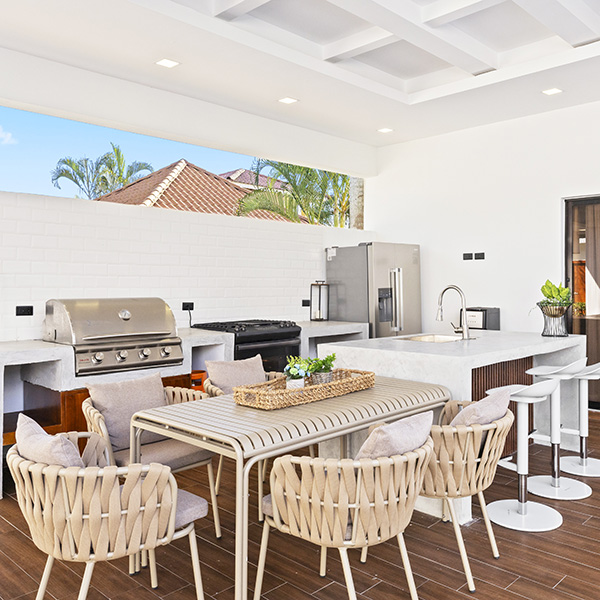
Can you build an outdoor kitchen on a deck?
Sure. You can definitely consider building one on your deck. However, you have to be specific about your requirements. The deck needs to be strong enough to carry extra weight caused by appliances, counter-tops and other equipment needed in your outdoor kitchen. Materials used also need to be weather-proof and proper drainage should be ensured. Furthermore, the set up needs to be safe from fire hazards and cooking areas need to have proper spacing.
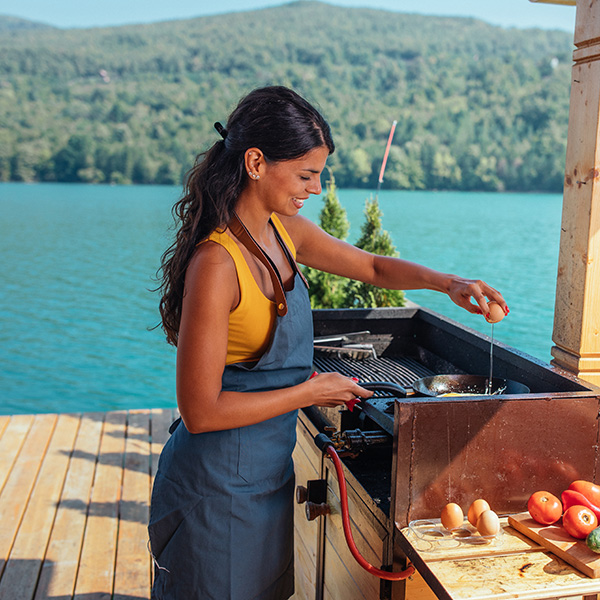
What are the best outdoor kitchen appliances?
The structural elements required for an outdoor kitchen are largely determined by how you plan to use the cooking station. Core items that most gourmets agree are non-negotiable include a high-end grill that allows for multiple cooks at high temperatures; a side burner for using pots and pans; and a refrigerator for keeping perishables and beverages cold. Other high-end kitchen equipment such as a pizza oven, beverage center, and outdoor sink can greatly enhance convenience and comfort.
What are the best outdoor kitchen materials?
As the outdoor kitchen is going to be, well, outdoors, it will be constantly exposed to the elements. The best materials for the outdoor kitchen countertops, flooring, and cabinetry should be able to withstand the weather while keeping their look and functionality.
Countertops:
Granite is a great choice for the countertops because it’s weatherproof, durable, heat-resistant, and stain-resistant. Bluestone and limestone are both excellent choice for weather-resistant countertops and provide a natural aesthetic that fits well outdoors. Another material often used for outdoor kitchen countertops is concrete as it is highly customizable and less expensive than natural stone. Stainless steel is a budget-friendly material that is durable, easy to clean, and offers modern, sleek look. However, steel can get very hot and may not be the best option for the hot climates.
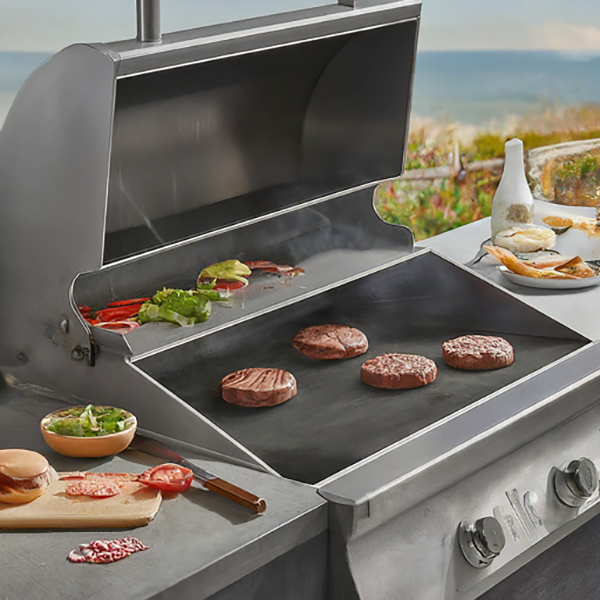
Flooring:
It is important to ensure slip-resistant flooring for your outdoor kitchen. Pavers are often the top choice for the job. For a natural and stylish look, consider slate or granite. But be aware of the higher cost to fit your budget. Concrete is a durable and economic option for outdoor kitchens flooring that are not under direct sunlight as this material can get very hot. Wood or composite decking is also often used in outdoor kitchens. However, be aware that decking is not as fire resistant as the above options and may not be as durable, so tread carefully when considering this option.
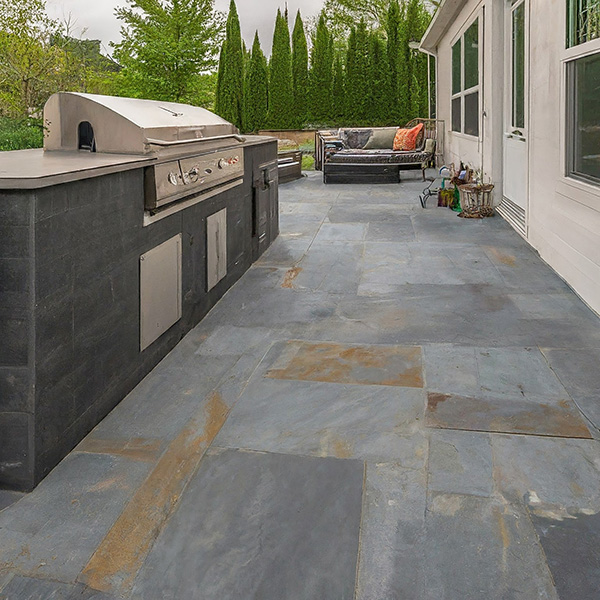
Cabinets:
The same requirements of durability, safety, and easy maintenance apply to the outdoor kitchen cabinets materials. Achieve a sophisticated and luxurious look with natural stone or brick with a metal frame or concrete blocks underneath. For budget-friendly options, there are plenty of choices for functional, durable, and stylish outdoor cabinets. Look into such options as plastic, wood, stainless, steel, or aluminum outdoor cabinetry.
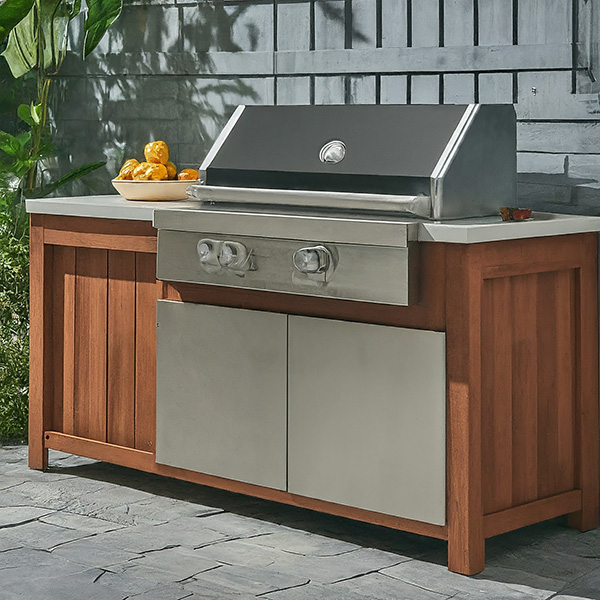
Safety considerations for an outdoor kitchen.
As always, safety considerations should be priority when designing and building and outdoor kitchen. It is strongly recommended that electric and gas appliances are installed by licensed professionals and in accordance with the local building and fire codes. Consider using non-slippery materials for the outdoor kitchen’s flooring. It can help prevent accidents in the rainy weather. Remember to have fire extinguishers in an easily accessible location.
Key takeaways:
Building an outdoor kitchen requires careful planning and consideration, just like any other backyard renovation project. Whether you are redesigning you deck or patio, planning a seasonal garden, or rethinking your entire backyard, the considerations of budget, functionality, style, and safety are always equally important.
Key Considerations for an Outdoor Kitchen Design:
- Price: The price of an outdoor kitchen depends on its size, complexity and materials. Set a clear budget and plan the kitchen’s features and materials for fit within in.
- Location: Select an area that is convenient and functional. Think about access to utilities, sun and wind exposure, and proximity to dining and prep areas.
- Materials: Countertops, flooring and cabinetry should be made with weather-proof materials. Good choices include granite, concrete, and stainless steel.
- Safety: Get professional help for installation of all electrical or gas appliances; use fire-resistant and slip-resistant materials. Have fire extinguishers available and accessible.
With careful planning of the features, materials, and resources, you can design your own outdoor cooking space that will fit your needs and be a source of joy for years to come. Happy building!

